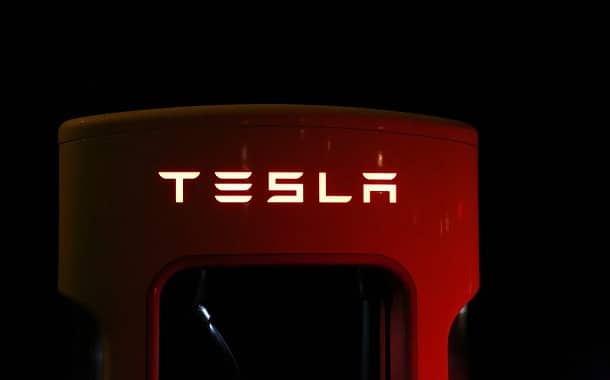Ordinary Guy
Diamond Member
- Jul 16, 2021
- 2,148
- 2,454
- 1,938
REALITY CHECK: At a neighborhood BBQ I was talking to a neighbor, a BC Hydro Executive. I asked him how that renewable thing was doing. He laughed, then got serious "If you really intend to adopt electric vehicles, you have to face certain realities."
"For example, a home charging system for a Tesla requires 75 amp service. The average house is equipped with 100 amp service. On our small street (approximately 25 homes), the electrical infrastructure would be unable to carry more than three houses with a single Tesla each. For even half the homes to have electric vehicles, the system would be wildly over-loaded. This is the elephant in the room with electric vehicles. Our residential infrastructure cannot bear the load."
So, as our genius elected officials promote this nonsense, not only are we being urged to buy these things and replace our reliable, cheap generating systems with expensive new windmills and solar cells, but we will also have to renovate our entire delivery system! This later "investment" will not be revealed until we're so far down this deadend road that it will be presented with an 'OOPS...!' and a shrug.
Eric test drove the Chevy Volt at the invitation of General Motors and he writes, "For four days in a row, the fully charged battery lasted only 25 miles before the Volt switched to the reserve gasoline engine." Eric calculated the car got 30 mpg including the 25 miles it ran on the battery. So, the range including the 9-gallon gas tank and the 16 kwh battery is approximately 270 miles.
It will take you 4.5 hours to drive 270 miles at 60 mph. Then add 10 hours to charge the battery and you have a total trip time of 14.5 hours. In a typical road trip, your average speed (including charging time) would be 20 mph.
According to General Motors, the Volt battery holds 16 kwh of electricity. It takes a full 10 hours to charge a drained battery. The cost for the electricity to charge the Volt is never mentioned, so I looked up what I pay for electricity.
I pay approximately (it varies with amount used and the seasons) $1.16 per kwh. 16 kwh x $1.16 per kwh = $18.56 to charge the battery. $18.56 per charge divided by 25 miles = $0.74 per mile to operate the Volt using the battery. Compare this to a similar size car with a gasoline engine that gets only 32 mpg. $3.19 per gallon divided by 32 Mpg = $0.10 per mile.
The gasoline powered car costs about $25,000 while the Volt costs $46,000 plus. So, the Government wants us to pay twice as much for a car, that costs more than seven times as much to run and takes three times longer to drive across the country.
WAKE UP NORTH AMERICA!!!!!!!
"For example, a home charging system for a Tesla requires 75 amp service. The average house is equipped with 100 amp service. On our small street (approximately 25 homes), the electrical infrastructure would be unable to carry more than three houses with a single Tesla each. For even half the homes to have electric vehicles, the system would be wildly over-loaded. This is the elephant in the room with electric vehicles. Our residential infrastructure cannot bear the load."
So, as our genius elected officials promote this nonsense, not only are we being urged to buy these things and replace our reliable, cheap generating systems with expensive new windmills and solar cells, but we will also have to renovate our entire delivery system! This later "investment" will not be revealed until we're so far down this deadend road that it will be presented with an 'OOPS...!' and a shrug.
Eric test drove the Chevy Volt at the invitation of General Motors and he writes, "For four days in a row, the fully charged battery lasted only 25 miles before the Volt switched to the reserve gasoline engine." Eric calculated the car got 30 mpg including the 25 miles it ran on the battery. So, the range including the 9-gallon gas tank and the 16 kwh battery is approximately 270 miles.
It will take you 4.5 hours to drive 270 miles at 60 mph. Then add 10 hours to charge the battery and you have a total trip time of 14.5 hours. In a typical road trip, your average speed (including charging time) would be 20 mph.
According to General Motors, the Volt battery holds 16 kwh of electricity. It takes a full 10 hours to charge a drained battery. The cost for the electricity to charge the Volt is never mentioned, so I looked up what I pay for electricity.
I pay approximately (it varies with amount used and the seasons) $1.16 per kwh. 16 kwh x $1.16 per kwh = $18.56 to charge the battery. $18.56 per charge divided by 25 miles = $0.74 per mile to operate the Volt using the battery. Compare this to a similar size car with a gasoline engine that gets only 32 mpg. $3.19 per gallon divided by 32 Mpg = $0.10 per mile.
The gasoline powered car costs about $25,000 while the Volt costs $46,000 plus. So, the Government wants us to pay twice as much for a car, that costs more than seven times as much to run and takes three times longer to drive across the country.
WAKE UP NORTH AMERICA!!!!!!!


